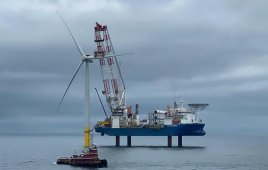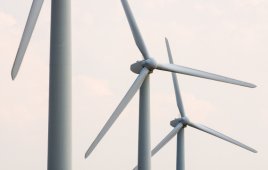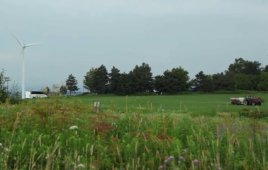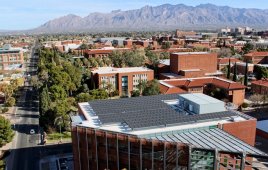 You have to admit that Congress has a lot on its plate right now with three wars and an economic mess, so expecting it to pass a national energy policy is a bit much. However, defining and financing such an enormous project should be the centerpiece of the next administration. At this time, both sides are in campaign mode. Hence, useful activity or new legislation will have to wait.
You have to admit that Congress has a lot on its plate right now with three wars and an economic mess, so expecting it to pass a national energy policy is a bit much. However, defining and financing such an enormous project should be the centerpiece of the next administration. At this time, both sides are in campaign mode. Hence, useful activity or new legislation will have to wait.
So in the spirit of public service, let’s suggest to all political parties that at least one plank in their platform consist of a national policy of energy independence, part of which will be a national renewable-energy standard, or NRES. Of course this should have been done a few administrations ago, but there is no time like the present.
A sustainable energy program for the U.S. would be an enduring and predictable energy policy, one that lets businesses make long-term plans. According to many C-level people at the recent AWEA Windpower 2011 show, the big industry problem is that no such energy policy exists. With at least a 10-year plan, turbine OEMs, financial institutions, utilities, and community leaders would have a guide to the future.
There will be costs to power purchasers no matter which way the nation turns in a quest for more energy. Ralf Sigrist, President and CEO of Nordex USA Inc. points out that costs in fossil fuels are more expensive than $0.053/kWh (a national average)because costs are often hidden. They include current costs, future costs, and socio-environmental costs. The Environmental Law Institute has calculated $70 billion in subsidies for fossil fuels in the period of 2002 to 2008, in the form of tax breaks, direct spending, and even health-care costs such as the treatment of black lung disease for coal miners.
Canada also provides ideas. Its economy has been growing at a relatively brisk 3.9% clip according to online reports. (The U.S. economy grew at 1.8% for Q1-2011 according to tradingeconomics.com.) Rakesh Naidu, a director with the Windsor-Essex Economic Development Corp. says feed in tariffs have worked well in Ontario making it the growth leader among Canadian provinces. The FIT provides varying payouts to home owners, businesses, and utilities for the size and type of renewable-energy equipment they choose. Furthermore, CanWEA says that each 100 MW of wind power represents a minimum of 100 jobs, $2.5 million in private investment, and $300,000 in revenue to municipal governments in the form of taxes and an equal amount to rural landowners in lease payments.
So what should go into a national policy? Start with three points: a goal, a timeframe, and conditions. The goal: 20% electric power from renewable energy and energy independence. The time frame: By 2030, because it’s doable. Conditions: An end to cash grants by 2013 along with an end to tax deductions to other energy companies and an extension of the Production Tax Credit for 10 years. Such credits reward action.
The time is right for wind power. The overall mechanical and electrical equipment is maturing to where turbines now stabilize the grid. Blades are getting longer so that several manufacturers have announced 2.4 to 3-MW machines ready for Class II winds, those with lower speeds found well away from the sweet spots in the Great Plains. With reliability rising, positive trends are bound to continue so that in five years the turbines going up will be more profitable than those working today. To not encourage development of wind power with a national RES borders on neglect, inaction that has contributed to the current economic mess.
Paul Dvorak
pdvorak@wtwhmedia.com
Filed Under: Policy




